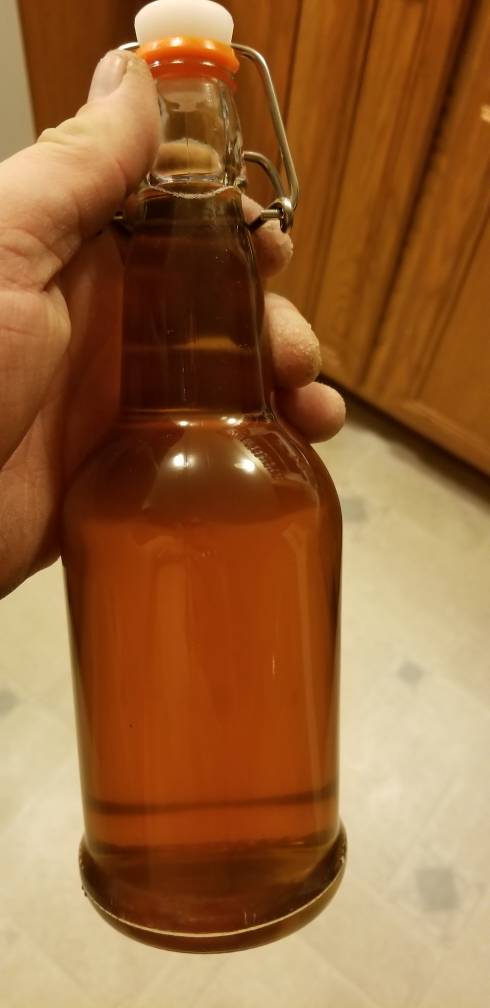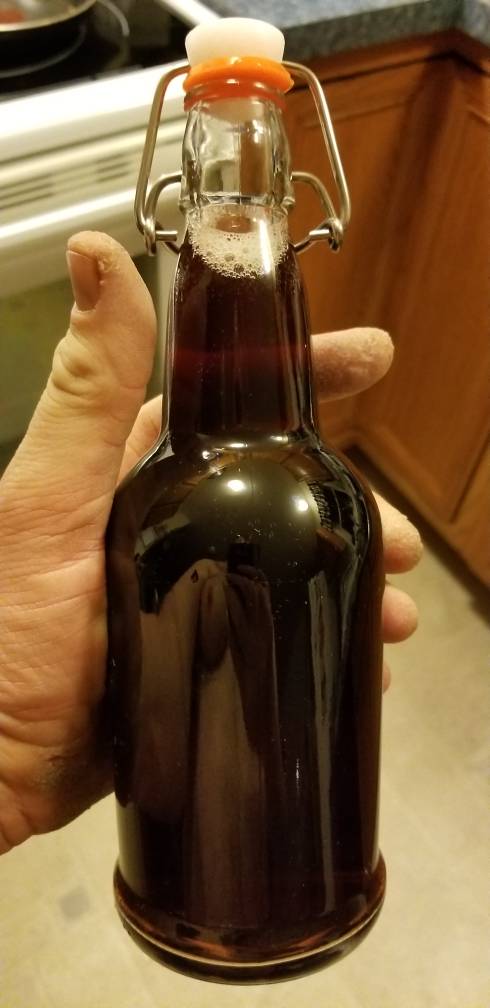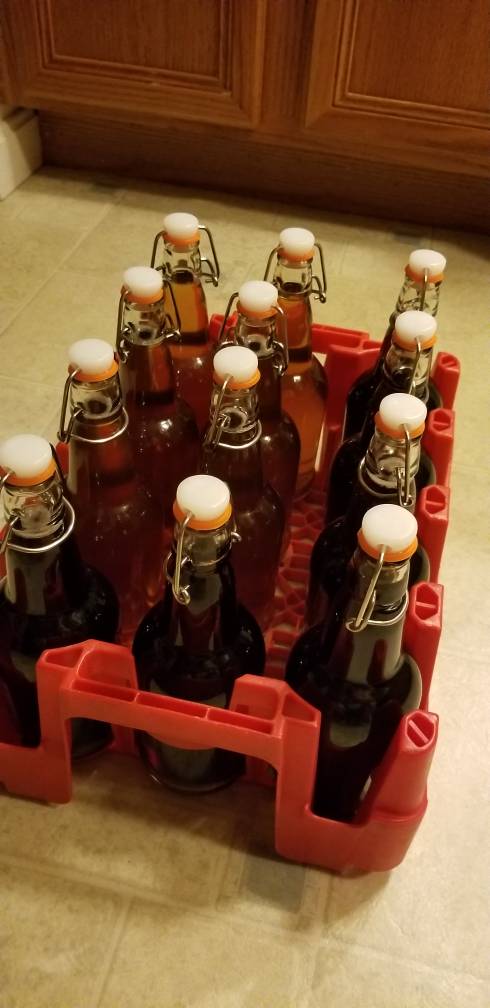theron.hall
Active Member
- Joined
- Oct 28, 2018
- Messages
- 27
- Reaction score
- 4
I attempted to make my first brew two nights ago.
I made a cyser with about a gallon of cider, 3lbs of wildflower honey and cinnamon sticks and whole cloves.
Everything was textbook it went great! But then.... I saw it the cider ingredients were not listed on the nutrition facts section. I saw 100% apple juice and thought that was it but on the front in tiny print.... Potassium Sorbate.
I was fuming! How could i have let this happen. Ingredients wasted!
So I tried again tonight. I made two brews one a cyser like before except with no additives and a melomel.
Cyser:
3lbs of honey (2 clover honey, 1 from a local bee keeper)
2.75 quarts if Great Value apple juice
50 while cloves
6 cinnamon sticks
Lalvin EC1118
1tsp yeast nutrient
OG 1.170
Melomel:
3 quarts of water
3lbs of clover Honey
3 lbs of frozen bluberries/raspberries/blackberries in a brewing bag.
Lalvin 71B
1tsp yeast nutrient
OG 1.140
Any thoughts on what I should expect?
Thanks,
T
I made a cyser with about a gallon of cider, 3lbs of wildflower honey and cinnamon sticks and whole cloves.
Everything was textbook it went great! But then.... I saw it the cider ingredients were not listed on the nutrition facts section. I saw 100% apple juice and thought that was it but on the front in tiny print.... Potassium Sorbate.
I was fuming! How could i have let this happen. Ingredients wasted!
So I tried again tonight. I made two brews one a cyser like before except with no additives and a melomel.
Cyser:
3lbs of honey (2 clover honey, 1 from a local bee keeper)
2.75 quarts if Great Value apple juice
50 while cloves
6 cinnamon sticks
Lalvin EC1118
1tsp yeast nutrient
OG 1.170
Melomel:
3 quarts of water
3lbs of clover Honey
3 lbs of frozen bluberries/raspberries/blackberries in a brewing bag.
Lalvin 71B
1tsp yeast nutrient
OG 1.140
Any thoughts on what I should expect?
Thanks,
T




![Craft A Brew - Safale S-04 Dry Yeast - Fermentis - English Ale Dry Yeast - For English and American Ales and Hard Apple Ciders - Ingredients for Home Brewing - Beer Making Supplies - [1 Pack]](https://m.media-amazon.com/images/I/41fVGNh6JfL._SL500_.jpg)























































 but as to your point about the triple berry fermenting too dry, the solution is to back sweeten. A dry wine simply has no residual sugar, and back sweetening adds back sugars that while not technically "residual" will remain in the wine to both add more viscosity and sweeten the wine AS IF those sugars were not fermented in the first place. But note, if you simply add table sugar (or honey) you are not going to be adding anything more to the fruity flavors. If you have a way to add concentrated (in this case) sugars from the same berries as you fermented then you will.
but as to your point about the triple berry fermenting too dry, the solution is to back sweeten. A dry wine simply has no residual sugar, and back sweetening adds back sugars that while not technically "residual" will remain in the wine to both add more viscosity and sweeten the wine AS IF those sugars were not fermented in the first place. But note, if you simply add table sugar (or honey) you are not going to be adding anything more to the fruity flavors. If you have a way to add concentrated (in this case) sugars from the same berries as you fermented then you will.